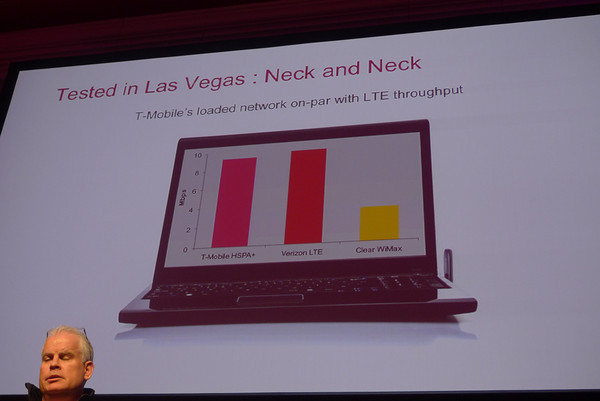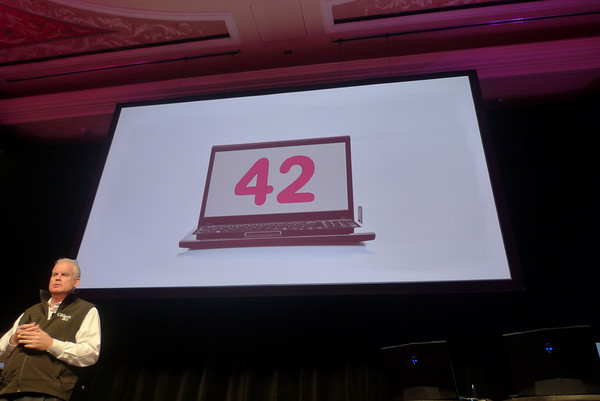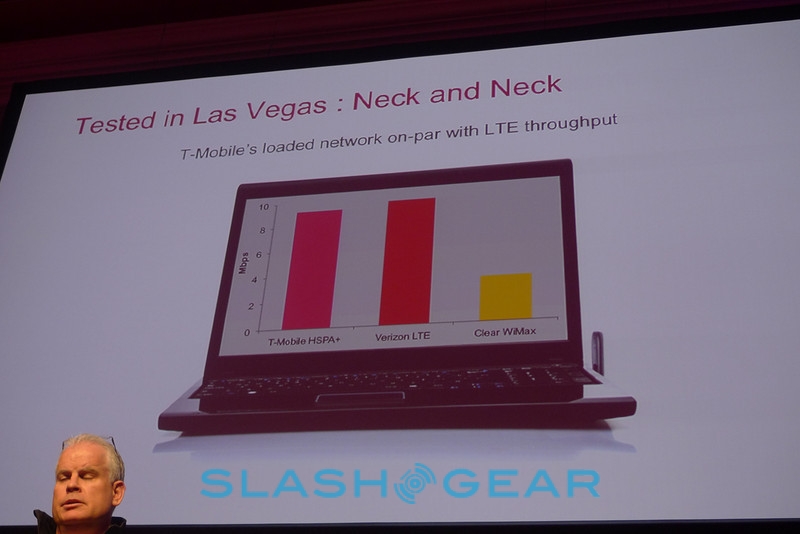T-Mobile Outlines 4G Plans, Announces They Are Launching 42Mbps In 2011
Continuing their time on stage at the Consumer Electronics Show in Las Vegas, T-Mobile took some time to detail their plans for 4G, how they stand currently against the competition, and even added a bit of a definition as to how the wireless carrier defines their 4G, HSPA+ network.
4G for T-Mobile means having a great 4G radio interface, and great 4G backhaul. Connectivity to the cell site. Basically, T-Mobile sees 4G as a way to connect customers faster to the Internet, and the world, as quickly as they can. T-Mobile says they are 160% bigger than Verizon, based on metropolitan areas for their "new" 4G LTE network. T-Mobile's HSPA+ network is 40% bigger than Sprint's WiMAX network. As for AT&T, T-Mobile can't compare quite yet, as the other company is still in the process of rolling it out.
HSPA and HSPA+ is a growing market that's seeing global adoption, and T-Mobile is still focused on the advanced network. The carrier believes that the evolution of the network will continue, from where they are at 21+ Mbps, and ratcheting up to 28Mbps, to 42 and 84Mbps. All the way up to the theoretical speeds of 672+Mbps. T-Mobile sees 42Mbps a strong possibility in 2011.
T-Mobile announced that they will be moving to 42Mbps with HSPA+ in the United States. The carrier has been testing HSPA+ in Las Vegas while they've been here, over the last couple of weeks, comparing Verizon's 4G LTE network and Sprint's WiMAX on data sticks, against T-Mobile's HSPA+ network. The results show that Verizon's LTE and T-Mobile's HSPA+ network are neck and neck, while Sprint's WiMAX seems to be trying to keep up. T-Mobile tried to stress that their network was stressed, while Verizon's wasn't.
And finally, T-Mobile took some time on stage to show off HSPA+ with 42Mbps right on stage. They began with a streaming test, with a prototype USB stick running the faster network speeds. During the test, there were stable speeds of anywhere between 26Mbps, all the way up to 35Mbps, for download. When they tested upload, it ranged from 2Mbps to 5Mbps, which also seemed stable.
The big test came in downloading music, which they did from the Amazon MP3 store. It started off quickly, but then the speed seemed to taper off with each song downloaded. They pointed out that a song should download in between 3 to 4 seconds, but during the demo it took noticeably longer. They also mentioned that, with HSPA+ 42Mbps, it should take about a minute to download a full album.
The carrier showed off gaming, using the HSPA+ network, online. They showcased playing Need for Speed: Hot Pursuit, playing against online gamers, while using the network.



